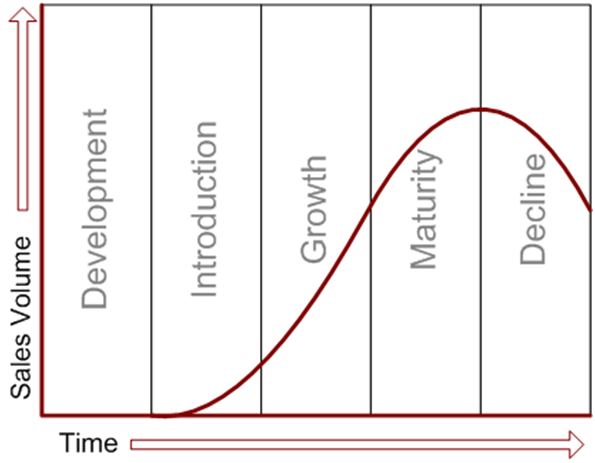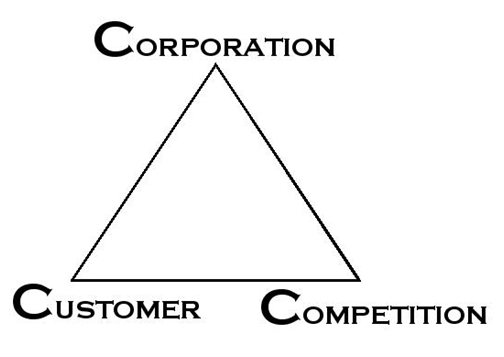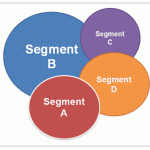Marketing

Relationship marketing can be defined as attracting, maintaining and enhancing customer relationships and its importance is increasing with the intensifying level of competition for all industries. Rossiter and Percy (1998, p.55) offer the definition of relationship marketing as the maximisation of long-term gain for the consumer, as well as, manufacturer. The essence of relationship marketing is related to building long-term relationships with customers instead of conducting one-time transactions with customers. The objectives of relationship marketing are “to identify and establish, maintain and enhance, and, when necessary, terminate relationships with customers and other stakeholders at a profit so that the objectives of all parties involved are met” (Brink and Berndt, 2009). References Brink, A. & Berndt, A. (2009) “Relationship Marketing and Customer Relationship Management” Juta Publications Rossiter, JR & Percy, L, 1998, Advertising Communications and Promotion Management, 2nd ed., Boston, McGraw-Hill.

Strategic marketing can be defined as “identification of one or more sustainable competitive advantages a firm has in the markets it serves (or intends to serve), and allocation of resources to exploit them” (Business Dictionary, 2012). As opposed to short-term view on marketing, strategic marketing calls for a structured and strategic approach in formation of marketing objectives, as well as, selection and implementation of marketing techniques and communication channels in order to achieve these objectives (Avasarikar and Chordiya, 2007). Practical benefits offered by strategic marketing include searching and identifying competitive edge for the business, easily clarifying long-term and short-term marketing objectives, obtaining guidance for operational decisions, and gainig a strong sense of the purpose for the company (Egan and Thomas, 2012). Strategic marketing process is divided by Cant et al. (2009) into three steps: planning, implementation, and evaluation. The planning step in strategic marketing process involve such activities as analysing current situation, setting specific goals, and formulating strategies that would assist in achieving these goals. Importantly, analysis of current situation in the marketplace should be undertaken with the primary aim of identifying gap in the market and sources of competitive edge for the firm. During the implementation step the chosen strategy is implemented on a practical level and all of the necessary financial and human resources are secured and attracted for this purpose. Unforeseen circumstances may occur during strategy implementation step that can create substantial challenges for management (Burrow, 2008). These difficulties may result due to the changes in the marketplace or inefficiencies associated with the formulating of the marketing strategy. The last step, evaluation deals with analysing the outcome of strategy implementation and comparing results against goals that have been set during the planning step. One of the main objectives at this stage can be specified as identifying…

The economic man approach to consumer behaviour perceives consumers to be highly rational and adequate engaging in economic transactions in a beneficial manner for self-interest (Tyagi, 2004). According to this principle consumer rational behaviour includes being aware of all alternative options, as well as, having knowledge of advantages and disadvantages associated with each option (Kahle and Close, 2006). Blackwell et al. (2006) adopt a sceptical approach to the level of applicability of economic man theory in today’s marketplace in practical levels arguing that nowadays consumers are more tempted to make ‘irrational’ purchase decisions due to the highly sophisticating levels of marketing strategies. References Blackwell, R., Miniard, P. and Engel, J. (2006) “Consumer behavior”, Mason: Thompson Kahle L.R. and Close, A. (2006) “Consumer Behaviour Knowledge for Effective Sports and Event Marketing”, Taylor & Francis, New York, USA Tyagi, C. and Kumar, A. (2004) “Consumer Behaviour”, Atlantic Publishers, US
By John Dudovskiy
Category: Consumer Behaviour

Product Life Cycle model divides the life cycle of products into five stages: development, introduction, growth, maturity, and decline. Each type of the product goes through all of these stages; however, the duration of each stage depends on a wide range of factors such as the nature of the product, its price, the level of competition in the industry, overall economic climate etc. Product Life Cycle model represents a valuable framework to be used in strategic marketing planning. Namely, with the application of the model marketing managers are able to forecast the life cycle of their products, and introduce necessary reflections within relevant marketing strategy.

Introduced by Kenichi Ohmae, 3 C’s Model deals with factors that can assist in achieving success for a marketing campaign (Lamb et al., 2011). Namely, 3 C’s stand for corporation, customer and competitors that are known as elements of strategic triangle. Corporation needs effective strategies so that current competitive edge can be further strengthened and additional sources of competitive advantages can be obtained. Specifically, corporate-based strategy involve selectivity and sequencing that involves formulation of competitive advantage, make or buy, that involves reviewing potential for outsourcing some operations, and improving cost effectiveness in relation to various business processes. Customer is seen as the base of any strategy. Accordingly, corporations need to identify their customers clearly by engaging market segmentation on the basis of objectives and customer coverage. Competition can be specified as another important factor. The negative impact of this factor can be minimised through building upon power of the image, capitalising on profit and cost structure differences, and using tangible and intangible resources in a rational way. The practical value of 3 C’s Model relates to identification of important factors effecting marketing strategy and dealing with these factors in an appropriate manner. References Lamb, C.W, Hair, J.F & McDaniel, C. (2011) “Essentials of Marketing” Cengage Learning

Cooks (2008) defines social media as the types of software tools used by individuals in order to consume, convey, create and share content such as blogs, social networking, wikis etc. The literature review revealed a consensus among authors on the idea that during the last decade social media has evolved as an efficient means of communication for business and private purposes. Moreover, Morley and Parker (2010) observe increasing level of addiction to social media among individuals in general, and younger people in particular. Specific characteristics of social media as a communication tools include peripheral traits, facilitation of many-to-many communication, high level of transparency, and many potentials for the disruption of communication. It has been stated that “one of the benefits of using social media services as a communication interface is that a lot of people are already there; they know how to use the features and perhaps the threshold for participating in interaction with others is lower” (Zavoral, 2010, p.413). Additional benefits of using social media as a communication channel in workplaces have been found to include inexpensive or no associated costs (Ruesch and Bateson, 2008), ease of use (Thayer, 2009), possibility to limit visibility whenever necessary (Guffey et al., 2009), and social media serving as a content-sharing medium (Bronstein et al., 2010). According to Bronstein et al. (2010) the use of social media by businesses in general and large multinational corporations in particular is not limited to the facilitation of communication. Rather, social media in its various forms such as company Facebook page or YouTube clip is being valued by increasing numbers of businesses at a strategic level. Moreover, according to Eunson (2012) the introduction of a wide range of innovative social media sites and new platforms for online communication did little to compromise the role of traditional e-mails…

Executive summary This is an innovative marketing plan devised for a new business that involves selling herbal teas online. The business involves importing three ranges of herbal tea – Rugose Rose flower tea, Carnatation flower tea, and Jasmine Bud flower tea would be from China to UK and selling over the website healthy-herbal.co.uk. The main competitive advantages associated with the business proposal include innovative marketing plan, competitive prices and high quality of products. A comprehensive situation analysis conducted on the basis of formulating key assumptions and conducting SWOT analysis has preceded the choice of marketing tools and techniques in order to well healthy-herbal.co.uk herbal teas. Marketing strategy formulated for healthy-herbal.co.uk consist of specific marketing techniques belonging to advertising, sales promotion, and direct marketing communication mix components. Moreover, the innovative marketing plan relies on viral marketing techniques due to their high level of cost effectiveness and speed. Namely, viral marketing techniques to be used by healthy-herbal.co.uk include e-mail marketing, Facebook marketing and marketing through YouTube. The marketing plan focuses on integration of all individual programs and initiatives in order to communicate the brand value proposal of healthy-herbal.co.uk which is associated with adopting a proactive approach in leading healthy lifestyle. The plan also contains provisions for the measurement of results. 1. Introduction This is an innovative marketing plan for a new online business that would be selling a range of herbal teas – Rugose Rose flower tea, Carnatation flower tea, and Jasmine Bud flower tea over a website, healthy-herbal.co.uk. Focusing on integrated marketing communications, the marketing plan addresses each component of marketing communication mix an individual manner. The range of herbal teas offered by healthy-herbal.co.uk – Rugose Rose flower tea, Carnatation flower tea, and Jasmine Bud flower tea and others have significant health benefits and they are also very delicious, and…

Marketing plan for John Lewis is developed on the basis of SOSTAC framework developed by Smith (2003), and the acronym is interpreted in the following manner: S Situation analysis – where are we now? O Objectives – where do we want to go? S Strategy – how are we going to get there? T Tactics – which are the details of strategy? A Action – implementation i.e. putting the plan to work C Control – measurement, monitoring, reviewing, updating and modifying Figure 1 Interpretation of SOSTAC framework Source: Smith (2003) The manner in which SOSTAC framework is going to be implemented by John Lewis is explained in great detail in following sections. Situational Analysis A range of key issues emerge from John Lewis SWOT analysis conducted in previous article. Specifically, international market expansion has been found to be an attractive business opportunity not currently utilised by the company. Engaging in international market expansion would be an effective response to the issue of market saturation in UK. Moreover, it has been found that forming strategic partnerships in global marketplace with multinational businesses can have an immense positive impact on John Lewis long-term growth. Global Marketing Objectives for John Lewis The following global marketing objectives for John Lewis are formulated according to SMART principle, the abbreviation standing for specific, measurable, achievable, realistic and time-bound: To obtain minimum 15% of department store market in Beijing and Shanghai by the end of 2015 To achieve an annual growth rate of minimum 18% for international markets To ensure that revenues from international markets account for at least 45% of total revenues for John Lewis by 2018 To be forming strategic partnerships with at least one major local company in each new market John Lewis enters in To achieve John Lewis to become…

John Lewis Partnership plc is UK partnership company that owns 37 John Lewis department stores, and 277 Waitrose supermarkets across the UK and a set of other businesses. The partnership employs 81,000 permanent staff that is referred to as Partners, who contribute to the annual gross sales of over £8.7 billion (About Us, 2012, online). Dedicated to the vision of its founder John Spedan Lewis ‘to create a company dedicated to the happiness of the staff through their worthwhile and satisfying employment in a successful business, John Lewis has been able to provide all its Partners with 18% bonus on their share profit for the financial year of 2010/2011 at a total cost of £194.5m. (Annual Reports and Account, 2011) It is important to note that “John Lewis’s strategy is remarkably clear and straightforward: partners should gain satisfaction from their works and status; customers should be recruited for the long term and profit is essential to enable growth and returns to all” (Isles, 2010, p.120). This strategy has enabled the company to charge customers premium prices for products and services it offers. John Lewis Environmental Trends Analysis The necessity for John Lewis to engage in international market expansion is justified by following factors and environmental trends: 1. Retail market saturation in UK. Retail market in UK is becoming highly saturated (Perrey and Spillecke, 2011) and this situation makes long-term growth prospects for John Lewis in local market obscure. Therefore, engagement in international market expansion is an appropriate strategy to be adopted by senior level management in current situation. 2. Attractive opportunities in Chine market. China is being perceived by many as a rapidly emerging superpower. Moreover, it has been estimated that “sales of luxury goods in the country reached 212 billion yuan in 2010 and probably grew 25 to…

To reach different markets or promote products or services to different locations or different people companies use a method called market segmentation. As Cumming (1994) explains, “Market segmentation describes the division of a market into homogenous groups which will respond differently to promotions, communications, advertising and other marketing mix variable.” Therefore, market segmentation is very important for most of all companies around the world. If a company cannot reach the market or area they will success; or the product or service they provide too expensive so the market they are in cannot afford, surely that company cannot expect to prospers but even fails as a company. Market segmentation Market segmentation is to divide the market into smaller segments. The main reason behind the market segmentation is to make easier to address the needs of smaller groups of customers, particularly if they have many characteristics in common (Breen, 2003). However, there are thing marketer needs to consider to see if a market must be segmented. The market in question must be large enough to segmented. Differences must exist between members of the market and these differences must be measurable through traditional collection methods (McElligiot, 2003). Lancaster et al (2002) argues that there is no “golden rule” when it comes to segmenting consumer markets. The marketing firm might have to investigate using different segmentation variables in order to identify the overall structure of market. Often it may be necessary to use a combination of segmentation variables to define the precise market segment. There are four variables commonly used for segmenting consumer markets: Geographic segmentation Demographic segmentation Psychographic segmentation Behavioural segmentation The first two are geographic and demographic segmentations are physical attribute classification, which refers to the dividing of a market into groups based characteristics, such as location, population, country of origin,…
